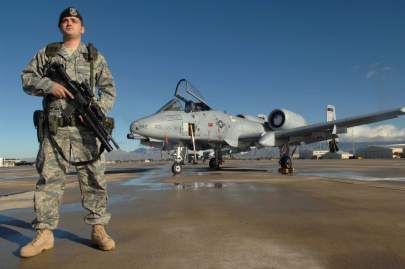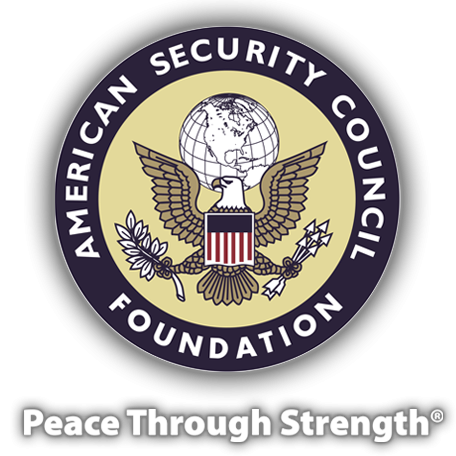Applying the Reagan Doctrine to Today's Challenges

February 2024 — Our January issue discussed the welcome news that the American public overwhelmingly supports the principles of the Reagan Doctrine and detailed the effectiveness of the Reagan Doctrine in defending the national interest in the final decade of the Cold War. In this issue, we look at how the Reagan Doctrine can be applied today.
Enemies
We must start with the Free World’s enemies. After all, there would be no need for a revived Reagan Doctrine—no need to arm freedom-fighters—if freedom weren’t under assault. But it is—seemingly everywhere.
Xi Jinping’s China has absorbed Hong Kong and attacked democratic India, bullies the democratic Philippines, is illegally building and militarizing islands in an effort to annex the South China Sea, threatens to seize democratic Taiwan, and is using military exercises to effectively blockade the island democracy. China sends Russia dual-use drones to wage war against democratic Ukraine, keeps Tehran’s tyranny afloat with massive lifelines of credit, runs diplomatic interference and misinformation operations for the Iran-Hamas onslaught of democratic Israel, and underwrites Stalinist North Korea.
North Korea constantly threatens to use its outlaw nuclear weapons against America, South Korea and Japan; shares arms with Hamas; helps Tehran expand its missile capabilities; and ships weapons to assist Russia in waging an unprovoked war of aggression against democratic Ukraine.
Vladimir Putin’s Russia is trying to erase democratic Ukraine; occupies parts of democratic Georgia; arms Hezbollah in its low-grade war against democratic Israel; spews military threats against Moldova, Norway, Poland, Lithuania, Finland and Sweden; props up tyrants in Syria, Nicaragua and Venezuela; and cooperates with Iran’s terrorist tyranny on missile development.
Iran equips Russia with kamikaze-drones that are being used against democratic Ukraine, harbors al-Qaeda’s leader, lumbers toward the nuclear club, bankrolls Hamas and Hezbollah in their proxy war on democratic Israel, arms militias that attack and kill U.S. troops, and targets U.S. personnel.
Treasure or Blood?
It doesn’t take a seasoned CIA analyst to connect the dots and see how the enemies of the Free World are collaborating to target the Free World. As Secretary of State Antony Blinken observes, “For our adversaries, be they states or non-states, this is all one fight.” The Free World must see the situation in the same light.
That explains why President Biden sent Congress a $105-billion request for military assistance for our most at-risk Free World partners: Ukraine, Israel and Taiwan. The aid package will backfill Israel’s weapons stocks as it defends itself from the Iran-Hamas-Hezbollah-Houthi hordes, deliver more ammunition and weapons systems to Ukraine as it fights off Russia’s invasion forces, and ship equipment to Taiwan as it scrambles to build a credible deterrent against Beijing’s behemoth military.
Importantly, this package of military assistance will do all these things without putting American soldiers in harm’s way. In fact, in helping these frontline democracies defend themselves, this 21st-century version of the Reagan Doctrine will enhance America’s own security. To borrow President Reagan’s wise words, “support for freedom fighters is self-defense” and “is tied to our
own security.”
Former Congresswoman Jane Harman, who chaired and served on key intelligence and security committees during her years in Congress, and Ambassador Eric Edelman, who served as undersecretary of Defense and in diplomatic posts, use the example of Ukraine to elaborate on President Reagan’s insight. They point out that for an investment of just $44.2 billion to date—a tiny fraction of the U.S. defense budget—Ukraine has destroyed “13,000 major pieces of Russian equipment, including almost 2,500 tanks, 900 artillery pieces and more than 130 helicopters…In effect, Russian combat power has been reduced by 50 percent.” And not one American serviceman has been put at risk.
However, Harman and Edelman emphasize that “If the U.S. wants to rely more on allies to help us fight our collective wars, then we need to be willing to invest our treasure, particularly when they are willing to sacrifice their blood.”
In other words, given what Putin is doing and what Xi is preparing to do, given what Iran has unleashed and what Kim is capable of unleashing, given that Cold War 2.0 is upon us, America needs to shift toward Cold War levels of defense spending.
With an $886-billion defense budget, it may look like America is fully funding its military. But looks can be deceiving. That $886-billion budget represents a three-percent increase over 2023, which is exactly the current rate of inflation, which means the military cannot grow in 2024. That presents a problem given the threats arrayed against us: Undersized and overstretched, the Army is trying to deter war in Europe with one-third the soldiers it deployed during the Cold War. Navy leaders report that they need 500 ships; they have 296. The Air Force is undermanned, undersized and old. The average age of America’s B-52 bombers is 60+. With only 20 stealth bombers in service, just 14 percent of the current bomber fleet would be able to penetrate Russia’s or China’s air defenses.
Costs
The cause of these self-inflicted wounds: For more than a decade, America has invested around 3 percent of GDP in defense. The average during the Cold War was more than twice that.
Our own history teaches the benefits of deterrence and the dangers of shortchanging defense: In the eight years before entering World War I, America devoted an average of 0.7 percent of GDP to defense. Waging World War I devoured an average of 16.1 percent of GDP—and 116,516 American lives. In the decade before entering World War II, America devoted an average of 1.1 percent of GDP to defense. Waging World War II devoured an average of 27 percent of GDP—and 405,399 American lives. During the Cold War, by contrast, America invested an average of 7 percent of GDP on defense. That didn’t end all wars, but it did protect America and deter Moscow from starting World War III.
Importantly, the polling cited in last month’s column also indicates very strong support among the American public—77 percent—for increasing defense spending. In other words, the public is ahead of the policymakers.
Shifting to a Cold War defense posture will demand bipartisan cooperation, fiscal discipline and hard choices: Fueled by torrents of domestic spending the past 20 years, the annual deficit tops $1 trillion and the national debt is a staggering $32 trillion. Defense spending is not to blame for these fiscal challenges. In fact, we could eliminate the entire defense budget and turn the Pentagon into a mega-mall, and we would still face a budget deficit—and wouldn’t even put a dent into the debt.
If anything can forge bipartisan consensus on hard choices, it should be national security. As President Reagan observed, “National security is government's first responsibility.”
Some will argue that the Reagan Doctrine approach—investing significantly more in defense, sending more aid to freedom-fighters, spending more to harden the frontlines of the Free World, pouring more into deterrent capabilities—is costly. They’re right. But there’s something far more costly than deterring war: waging war. Ask the Ukrainians and the Israelis.
In words President Reagan would have applauded, President Zelensky of Ukraine reminds the Free World that “Freedom must be armed better than tyranny.” When it’s not, the result is Ukraine 2022, Korea 1950, Pearl Harbor 1941, Poland 1939.
Reviving and returning to the Reagan Doctrine will help ensure that Taiwan, the Philippines, the Baltics, Kosovo, Moldova and other free nations aren’t added to that list.











